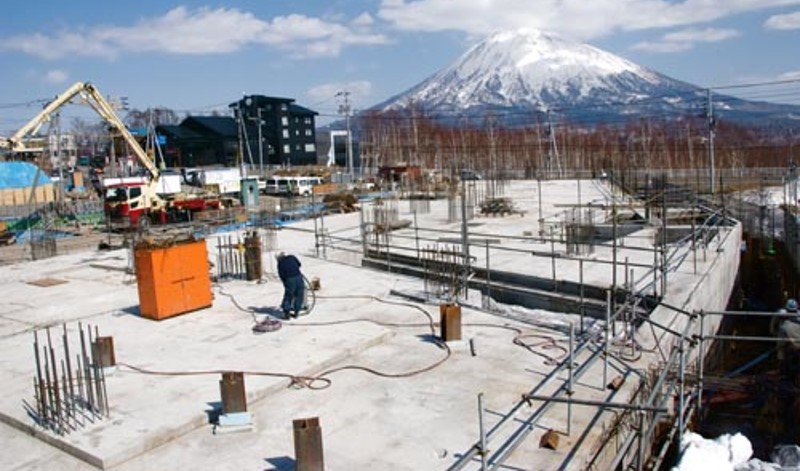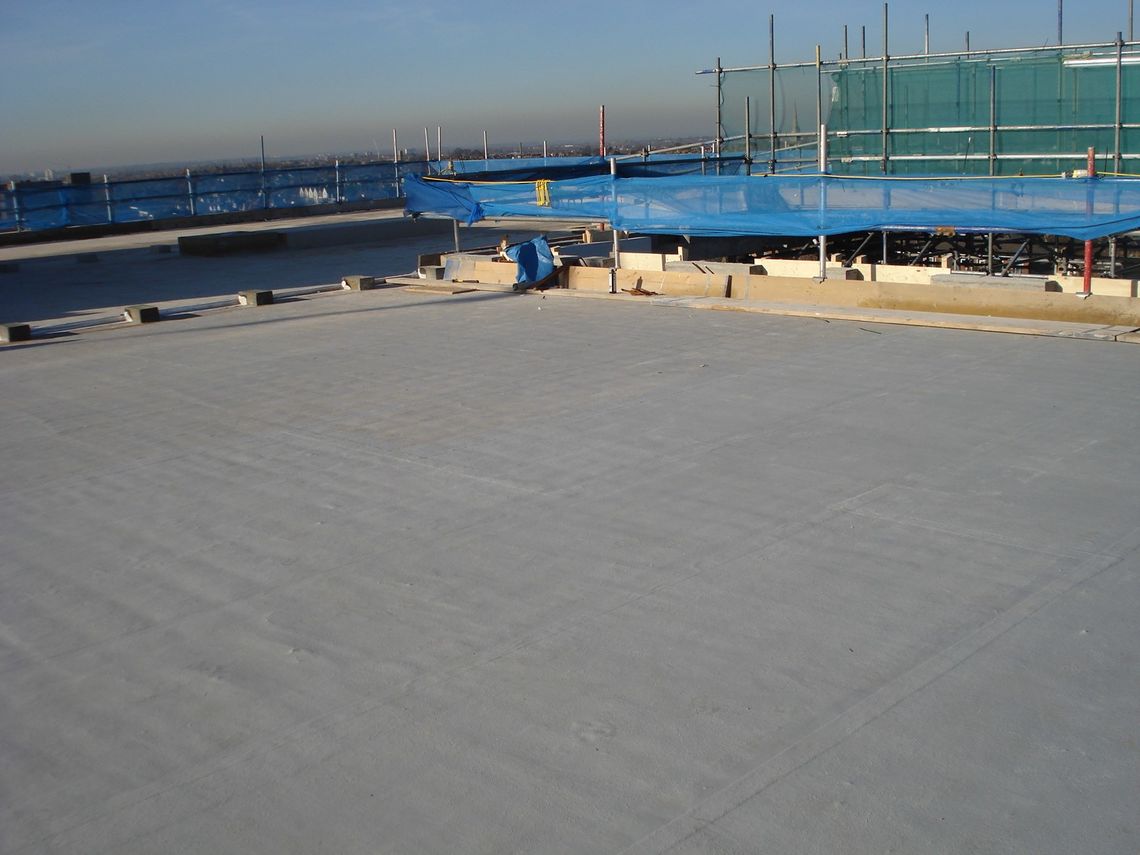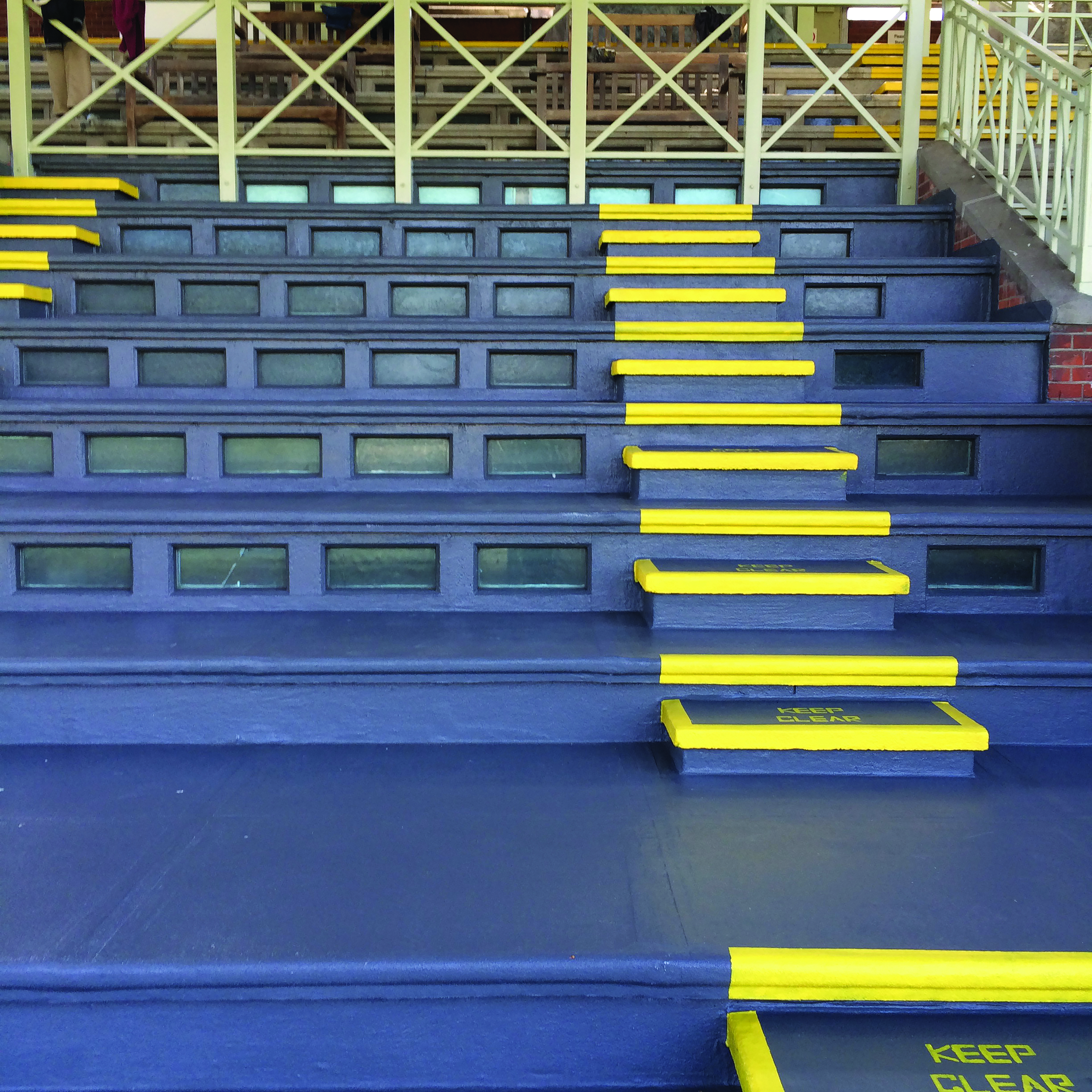WIDOPAN News
How to Protect Roof Membranes During Construction

Much to the frustration of those in the roofing industry, around 80% of failed roof membranes and leaks are caused by non-roofers.
Whether from genuine accidents or avoidable carelessness, the biggest threat to the functionality of a watertight roof is human error.
While liquid waterproofing is robust, there is still potential for damage, particularly during the initial application and curing phases.
If you’re a project manager wanting to reduce the potential for damage on-site, this article covers some of the main ways to do so.
Damaged Roofs And Waterproofing
On a construction site, a variety of personnel from various professions are frequently present.
Unfortunately, many of them may be unconcerned with the membrane that protects the building from wind and weather.
The construction site has also evolved into a multi-disciplinary environment, with varying levels of knowledge and respect for one another’s work ; these factors play a significant role in the potential for roof damage.
During a building project, damage claims have a negative influence on the cost, creating timetable delays and often necessitating more labour.
By knowing the most common causes of membrane damage, you can protect your site from preventable setbacks.
5 Tips for Keeping the Roof Membrane Safe
1. Protect it from cigarette butts
Cigarette butts can damage a roof membrane, so always provide a designated smoking area and ashtrays.
2. Keep debris off the roof
Ensure spare fixings and stones don’t damage the roof membrane by having a tidy work area and dedicated walkways.
3. Keep tools secured safely
Dropped hammers and tools are the most common way a roof membrane gets damaged. So, ensure all tools are carried safely on site.
4. Protect the membrane from equipment
Make sure you provide a solid base for heavy machinery or cutting equipment to be used on, protecting the membrane from damage.
5. Repair damage promptly
A small area of badly repaired membrane can compromise the integrity of the waterproofing.
Therefore, if you notice damage, have it repaired immediately by the roofing contractor.
As you can see, there are no special considerations to make when trying to protect your roofing system; it’s simply a case of being aware of your surroundings and working accordingly.
A clean site is a safe site, so encourage the right behaviours on your next project and eliminate avoidable damage.
Learn more about protecting your site in How To Avoid Leaky Gutters, or get in touch today.




![<div class="icon"><picture><!--[if IE 9]><video style='display: none;'><![endif] --><!--[if IE 9]></video><![endif] --><img src="/application/files/4717/1775/6699/Flat_Roofs_-_WIDOPAN.svg" alt="Flat Roofs - WIDOPAN.svg" class="content-editor-image-left" height="30" style="float: left;" width="28" /></picture></div>
<div class="icon-text">
<p>Flat Roof</p>
</div>
<div class="icon"><i class="fas fa-location-arrow"></i></div>
<div class="icon-text">Wembley, HA9
<p> </p>
</div>
<div class="icon"><i class="fa fa-calendar"></i></div>
<div class="icon-text">October 2022
<p> </p>
</div>](/application/files/6416/8683/6705/Brent-House-Wembley-Referbishment-Widopan.jpg)
![<div class="icon"><picture><!--[if IE 9]><video style='display: none;'><![endif] --><!--[if IE 9]></video><![endif] --><img src="/application/files/4717/1775/6699/Flat_Roofs_-_WIDOPAN.svg" alt="Flat Roofs - WIDOPAN.svg" class="content-editor-image-left" height="30" style="float: left;" width="28" /></picture></div>
<div class="icon-text">
<p>Flat Roof</p>
</div>
<div class="icon"><i class="fas fa-location-arrow"></i></div>
<div class="icon-text">
<p>London, SE11</p>
</div>
<div class="icon"><i class="fa fa-calendar"></i></div>
<div class="icon-text">
<p>September 2022</p>
</div>](/application/files/1616/8735/3171/Vauxhall-Climbing-Centre-5-scaled.jpg)
![<div class="icon"><picture><!--[if IE 9]><video style='display: none;'><![endif] --><!--[if IE 9]></video><![endif] --><img src="/application/files/4717/1775/6699/Flat_Roofs_-_WIDOPAN.svg" alt="Flat Roofs - WIDOPAN.svg" class="content-editor-image-left" height="30" style="float: left;" width="28" /></picture></div>
<div class="icon-text">
<p>Flat Roof</p>
</div>
<div class="icon"><i class="fas fa-location-arrow"></i></div>
<div class="icon-text">
<p>London</p>
</div>
<div class="icon"><i class="fa fa-calendar"></i></div>
<div class="icon-text">
<p>September 2022</p>
</div>](/application/files/6316/8857/4311/County-Hall-2.jpg)
![<div class="icon"><picture><!--[if IE 9]><video style='display: none;'><![endif] --><!--[if IE 9]></video><![endif] --><img src="/application/files/4717/1775/6699/Flat_Roofs_-_WIDOPAN.svg" alt="Flat Roofs - WIDOPAN.svg" class="content-editor-image-left" height="30" style="float: left;" width="28" /></picture></div>
<div class="icon-text">
<p>Flat Roof</p>
</div>
<div class="icon"><i class="fas fa-location-arrow"></i></div>
<div class="icon-text">
<p>Premier Inn, Cardiff Waterside</p>
</div>
<div class="icon"><i class="fa fa-calendar"></i></div>
<div class="icon-text">
<p>January 2022</p>
</div>](/application/files/9116/8864/6522/Premier-Inn-Cardiff-Waterside-1.jpg)
![<div class="icon"><picture><!--[if IE 9]><video style='display: none;'><![endif] --><!--[if IE 9]></video><![endif] --><img src="/application/files/4717/1775/6699/Flat_Roofs_-_WIDOPAN.svg" alt="Flat Roofs - WIDOPAN.svg" class="content-editor-image-left" height="30" style="float: left;" width="28" /></picture></div>
<div class="icon-text">
<p>Flat Roof, Podium,</p>
</div>
<div class="icon"><i class="fas fa-location-arrow"></i></div>
<div class="icon-text">
<p>Barnes Village, Cheadle</p>
</div>
<div class="icon"><i class="fa fa-calendar"></i></div>
<div class="icon-text">
<p>January 2020</p>
</div>](/application/files/3016/8864/5647/Millbrook-Park-Taylor-Wimpey.png)
![<div class="icon"><picture><!--[if IE 9]><video style='display: none;'><![endif] --><!--[if IE 9]></video><![endif] --><img src="/application/files/7116/8311/7125/Green_Roof_Applications_by_Widopan.svg" alt="Green Roof Applications by Widopan.svg" class="content-editor-image-left" style="float: left;" height="24" /></picture></div>
<div class="icon-text">
<p>Green Roof, Flat Roof</p>
</div>
<div class="icon"><i class="fas fa-location-arrow"></i></div>
<div class="icon-text">
<p>London, E2</p>
</div>
<div class="icon"><i class="fa fa-calendar"></i></div>
<div class="icon-text">
<p>March 2018</p>
</div>](/application/files/3517/2787/8494/volcano-house.webp)
![<div class="icon"><picture><!--[if IE 9]><video style='display: none;'><![endif] --><!--[if IE 9]></video><![endif] --><img src="/application/files/4717/1775/6699/Flat_Roofs_-_WIDOPAN.svg" alt="Flat Roofs - WIDOPAN.svg" class="content-editor-image-left" height="30" style="float: left;" width="28" /></picture></div>
<div class="icon-text">
<p>Flat Roof, New Build</p>
</div>
<div class="icon"><i class="fas fa-location-arrow"></i></div>
<div class="icon-text">
<p>Millbrook Park, Mill Hill, London</p>
</div>
<div class="icon"><i class="fa fa-calendar"></i></div>
<div class="icon-text">
<p>January 2017</p>
</div>](/application/files/4116/8864/4346/Barnes-Village-Cheadle.jpg)
![<div class="icon"><picture><!--[if IE 9]><video style='display: none;'><![endif] --><!--[if IE 9]></video><![endif] --><img src="/application/files/4717/1775/6699/Flat_Roofs_-_WIDOPAN.svg" alt="Flat Roofs - WIDOPAN.svg" class="content-editor-image-left" height="30" style="float: left;" width="28" /></picture></div>
<div class="icon-text">
<p>Flat Roof, New Builds</p>
</div>
<div class="icon"><i class="fas fa-location-arrow"></i></div>
<div class="icon-text">
<p>Stratford, East London</p>
</div>
<div class="icon"><i class="fa fa-calendar"></i></div>
<div class="icon-text">
<p>July 2012</p>
</div>](/application/files/2416/8864/2641/EastVillage1.jpg)
